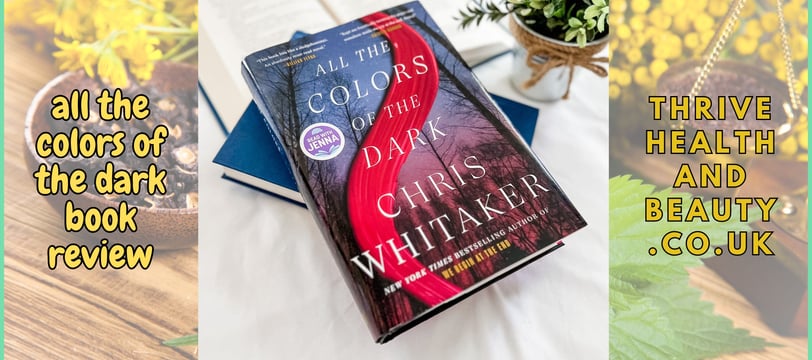Exploring the Depths: A Review of 'All the Colors of the Dark'


Introduction to 'All the Colors of the Dark'
'All the Colors of the Dark' is a significant work authored by the acclaimed writer Edoardo Albert. Known for his incisive narratives and compelling character development, Albert delves deep into themes of fear, isolation, and the human psyche in this novel. The book falls within the psychological thriller and horror genres, intertwining elements of suspense with a thought-provoking exploration of the darker aspects of human existence. These themes resonate deeply in contemporary literature, as they reflect the anxieties and complexities faced by modern readers.
This novel was published in a time when the boundaries of genre literature are increasingly blurred, allowing for innovative storytelling approaches. As societal issues grow in complexity, the necessity for narratives reflecting such themes has become paramount. 'All the Colors of the Dark' invites readers to confront their fears, immersed in a narrative that challenges their perception of reality. Through intricate plotlines and nuanced characters, Albert crafts a story that is not only captivating but also relevant to the ongoing discourse on mental health and emotional turmoil.
Plot Overview
'All the Colors of the Dark' unfolds in a brooding atmosphere steeped in horror and mystery. The film is centered around a young woman named Jane, who is grappling with the trauma of her mother's death and is plagued by nightmares that blur the lines between her subconscious and reality. As she attempts to navigate her grief, Jane becomes the focal point of sinister forces that seem to have an insidious interest in her well-being.
The story is set against the backdrop of a hauntingly atmospheric city, where the interplay of shadows and light reflects Jane's tumultuous mental state. Her journey begins in a seemingly ordinary world, juxtaposed with the surreal and nightmarish elements that emerge as the narrative progresses. Jane's character serves as an embodiment of fragility, as she oscillates between vulnerability and resilience while contending with her internal and external conflicts.
Key to the plot are the relationships Jane forms with other characters, including her estranged lover, who represents a past she cannot escape, and a mysterious new acquaintance whose intentions remain unclear. This duality of relationships highlights the theme of trust and the impact of trauma on human connections. Each character adds depth to the narrative, driving the story forward as Jane confronts the manifestations of her fears, both real and imagined.
The core conflict revolves around Jane's struggle for autonomy in a world that seeks to control her. As she delves deeper into the darkness surrounding her, the tension escalates, leading to a series of revelations that challenge her understanding of reality. This intricate web of plot elements serves to engage the viewer, inviting them to ponder the nature of reality and illusion while establishing a suspenseful atmosphere that permeates the film.
Themes and Symbolism
'All the Colors of the Dark' masterfully explores various themes and symbols, with color itself serving as a profound metaphor throughout the narrative. The author employs colors not merely as visual elements but as representations of complex emotions, intricate experiences, and significant societal issues that resonate deeply with readers. The meticulous use of color enhances the emotional landscape of the story, allowing readers to delve into the characters' inner worlds.
One of the most prominent themes is fear, both as a personal experience and a broader societal phenomenon. Colors are often linked to characters' fears, utilizing dark and muted shades to signify dread and anxiety. For instance, the use of deep blacks and grays evokes a sense of foreboding, influencing the reader's perception of the characters' psychological states. In contrast, brighter colors may symbolize temporary moments of hope or clarity, juxtaposing the overarching sense of fear present in the story. This dynamic interplay allows for a nuanced exploration of how fear manifests in different forms, affecting the characters’ identities and decisions.
Furthermore, the theme of identity is intricately tied to the symbolism of color. Characters evolve throughout the narrative, often reflected through their associations with specific colors. The author uses these symbolic colors to illustrate the characters' developmental journeys as they navigate their personal struggles and societal expectations. The interplay between light and darkness in the narrative serves as a representation of the duality within human nature, suggesting that just as colors can be perceived differently based on perspective, so too can identities be multifaceted and fluid.
Overall, the exploration of themes such as fear and identity, combined with the rich symbolism of color, profoundly enhances the reader's understanding of 'All the Colors of the Dark.' The complexity of these elements invites readers to engage critically with the text, illustrating the depth of the characters’ journeys and the societal challenges they face.
Final Thoughts and Recommendations
As I reflect upon "All the Colors of the Dark," it becomes clear that this narrative is not merely a conventional thriller but an intricate exploration of human emotion and experience. The author's writing style is both evocative and immersive, enticing the reader to journey through the protagonist's internal struggles and despair. The prose flows seamlessly, blending vivid imagery with poignant moments that resonate with the reader long after the final page has been turned.
The pacing of the novel is also noteworthy; it maintains a careful balance between suspense and character development. Each chapter builds upon the previous one, maintaining an engaging momentum that keeps readers hooked. The author masterfully interweaves tension and introspection, capturing the duality of fear and vulnerability that permeates the story. This approach not only heightens the suspense but also enriches the reader's understanding of the characters’ motivations and complexities.
Furthermore, the character development stands out as a key strength of the book. The protagonist is intricately crafted, making her struggles and triumphs palpable. Readers will find themselves deeply invested in her journey, as the author adeptly presents her vulnerabilities and inner conflicts. The supporting characters also contribute significantly to the narrative, each bringing their unique perspectives and nuances to the storyline.
For potential readers, "All the Colors of the Dark" is particularly recommended for those who appreciate psychologically rich narratives that delve into the unseen aspects of horror and human despair. Fans of literary fiction combined with elements of psychological suspense will find the novel particularly rewarding. In conclusion, this book merits a place within the broader literary landscape, showcasing the power of storytelling to illuminate the darker facets of life while simultaneously offering a profound emotional experience.


